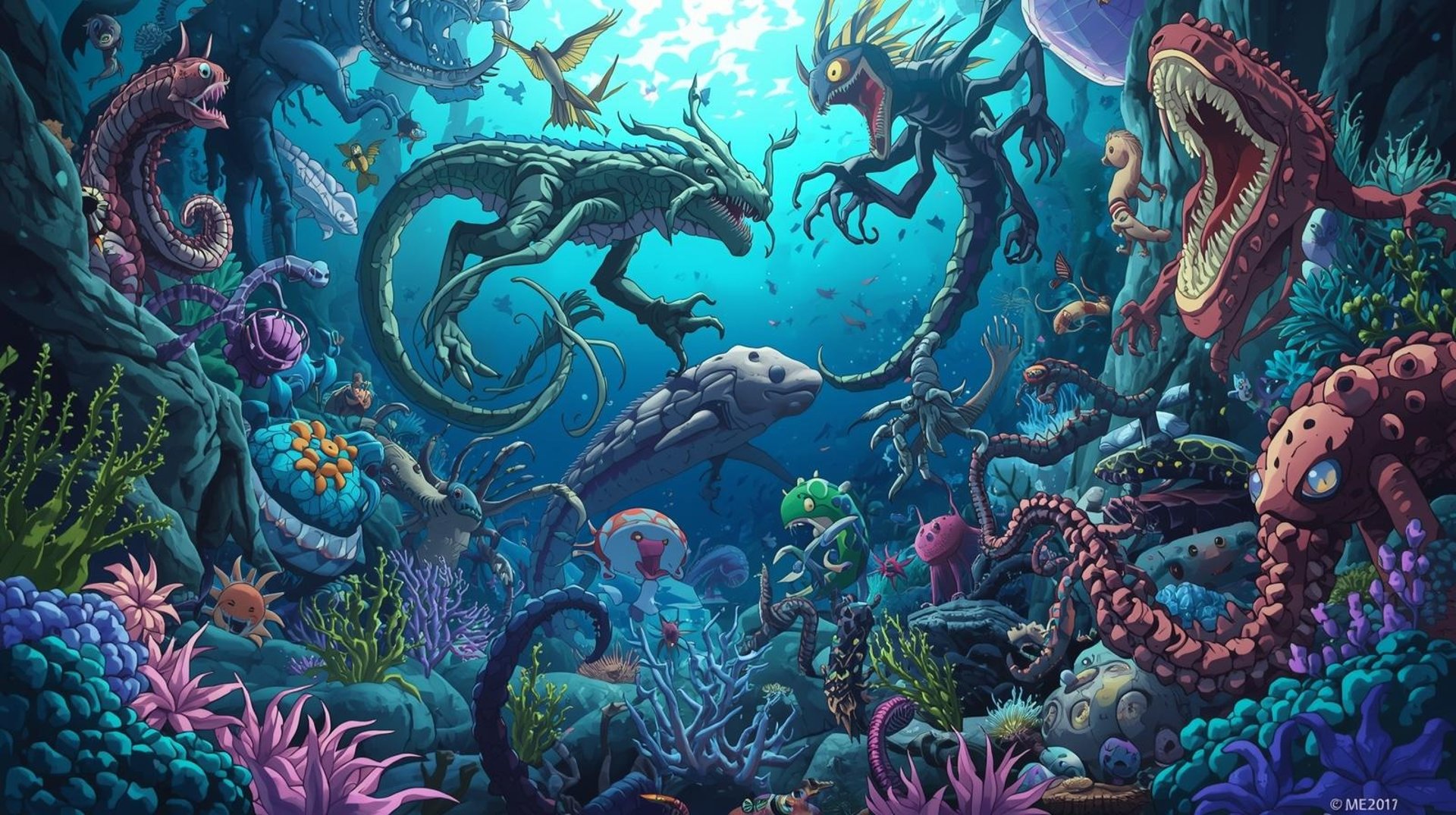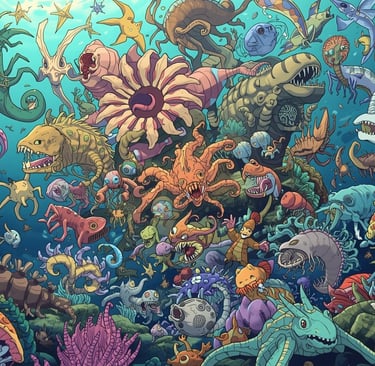
The Cambrian Explosion: Diversification of Life 540 Million Years Ago
Roughly 540 million years ago, during the Cambrian Period, life on Earth underwent one of the most profound transformations in biological history: the Cambrian Explosion. Within a relatively short geological interval—between 20 and 25 million years—virtually all the major animal body plans that exist today made their first appearance. This event represents not only a turning point in evolution but also a mystery that continues to fascinate paleontologists, biologists, and geologists alike.



The Cambrian Explosion: Diversification of Life 540 Million Years Ago
Introduction
Roughly 540 million years ago, during the Cambrian Period, life on Earth underwent one of the most profound transformations in biological history: the Cambrian Explosion. Within a relatively short geological interval—between 20 and 25 million years—virtually all the major animal body plans that exist today made their first appearance. This event represents not only a turning point in evolution but also a mystery that continues to fascinate paleontologists, biologists, and geologists alike.
The Pre-Cambrian Context
Before the Cambrian, Earth was home to mostly simple, microscopic life forms. In the Ediacaran Period (635–541 million years ago), soft-bodied multicellular organisms such as Dickinsonia, Charniodiscus, and other enigmatic creatures thrived. They lacked hard shells, bones, or complex appendages, and their ecological interactions were relatively limited.
Then, around 541 million years ago, fossil records suddenly reveal an extraordinary burst of complexity. Organisms with hard exoskeletons, advanced sensory organs, and specialized appendages appear seemingly abruptly.
What Happened in the Cambrian Explosion?
The Cambrian Explosion marks the rapid diversification of animal life, leading to:
The origin of most major phyla: The arthropods, mollusks, echinoderms, chordates, cnidarians, annelids, and others all appear in the fossil record.
Evolution of hard parts: Shells, spines, and exoskeletons became widespread, increasing fossil preservation. This revelation drove predator-prey dynamics.
Complex body plans: The bilateral symmetry, segmentation, circulatory systems, and nervous systems emerged and diversified.
Predation and defense: For the first time, ecosystems show evidence of predators (e.g., Anomalocaris) and prey (e.g., trilobites), suggesting an “arms race” in evolution.
Expansion of ecological niches: Organisms began burrowing, swimming, and colonizing at different levels of the seafloor. These aspects lead to more complex food webs.
The Fossil Evidence
Some of the most famous Cambrian fossil sites include:
The Burgess Shale (Canada): Ancient bodies preserve soft-bodied organisms like Opabinia (with five eyes) and Hallucigenia (with spines and tentacle-like legs).
Chengjiang (China): A site recognized as the window into early Cambrian ecosystems, with exquisitely preserved chordates such as Myllokunmingia.
Sirius Passet (Greenland): Another site preserving diverse Cambrian fauna.
These deposits reveal that life was not only diversifying but doing so in bizarre and experimental ways. Many Cambrian organisms had body plans that seem alien to us today.
Possible Causes of the Cambrian Explosion
Scientists debate why life diversified so rapidly. Several hypotheses have been proposed, and most likely a combination of factors was at play:
1. Environmental Factors
Rise in oxygen levels: The increasing level of oxygen in oceans may have supported larger, more complex bodies with higher metabolic demands.
Changes in ocean chemistry: An increase in calcium and phosphate may have enabled biomineralization, leading to the development of shells and skeletons.
2. Ecological Drivers
Predator-prey arms race: Predation spurred defensive adaptations clustered together, creating armor and spines, driving rapid evolution.
New ecological niches: Burrowing and active swimming opened up new ways of living.
3. Genetic Innovations
Hox gene expansion: These genes control body patterning. Their diversification may have enabled the creation of new and complex body plans.
4. Geological Context
The breakup of supercontinents and shallowing out of seas created diverse marine environments, fueling biodiversity.
Why Was It So Sudden?
The Cambrian Explosion is “sudden” in geological terms. Twenty million years is a blink in Earth’s 4.5-billion-year history. Yet for evolution, it is still a long time span. The apparent abruptness may also reflect a bias in the fossil record—before the Cambrian, soft-bodied organisms simply fossilized poorly, with less to no clarity. Whereas Cambrian hard shells are preserved much more readily. Thus, part of the “explosion” may be an artifact of preservation.
Legacy of the Cambrian Explosion
The Cambrian Explosion set the foundation for all modern animal diversity. Nearly every major body plan seen today first emerged in this period, and while many Cambrian lineages went extinct. The basic evolutionary “toolkit” established then still underlies animal life.
It also shaped the philosophical and scientific outlook on evolution. Charles Darwin, in On the Origin of Species (1859), noted that the sudden appearance of complex animals in the Cambrian explosion period seemed to contradict gradual evolutionary change. Since then, discoveries have shown that the “explosion” was both a genuine diversification and a product of incomplete earlier fossil evidence.
Conclusion
The Cambrian Explosion remains one of the most remarkable evolutionary episodes in Earth’s history. It was not merely the appearance of new species but the establishment of fundamentally new ways of being alive, i.e., skeletons, eyes, nervous systems, mobility, and ecological interdependence.
There are many mysteries that remain—why it happened when it did, and why it unfolded so quickly—the Cambrian Explosion underscores a universal truth: life is both innovative and opportunistic, capable of leaping into new forms when conditions allow. What began in the Cambrian over 540 million years ago still shapes the diversity of organisms inhabiting our planet today—including us.
